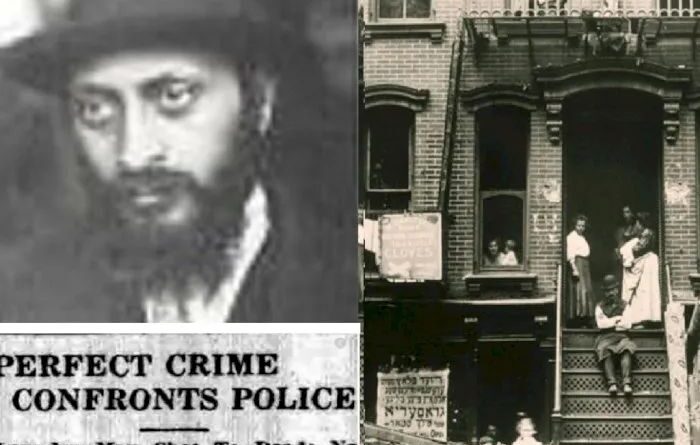The Locked Room Mystery Murder of Isadore Fink in New York City
The murder of Isadore Fink on March 9, 1929, remains one of the most baffling cases in New York City’s criminal history. Known as a classic locked-room mystery, this crime defied conventional explanations, leaving police and detectives puzzled for decades. Fink’s death is often cited as a perfect example of how perplexing a seemingly straightforward case can become, especially when the circumstances defy logic and reason. This article delves into the details of Fink’s murder, the investigation that followed, and the theories that emerged as experts attempted to unravel this confounding mystery.
Who Was Isadore Fink?
Isadore Fink was a 30-year-old Polish immigrant who ran a small laundry business at 4 East 132nd Street in Harlem, New York City. Fink was known as a hardworking, quiet man who mostly kept to himself, focusing on his business and living in a small apartment adjacent to his laundry shop. Though his life was ordinary, the circumstances surrounding his death were anything but, turning him into an enduring enigma in the annals of unsolved crimes.
The Night of March 9, 1929
On the cold night of March 9, 1929, Isadore Fink was working late in his laundry shop. At approximately 10:30 PM, neighbors heard loud noises that sounded like gunshots coming from his apartment. A concerned neighbor, Mrs. Locklan Smith, immediately notified the police. When officers arrived at the scene, they found the doors locked from the inside and the windows securely bolted.
Discovery of the Locked Room
The police were faced with a classic locked-room scenario: all entrances to the apartment were closed and secured. Unable to gain entry through the doors, officers were forced to send a small boy through a transom window, a narrow opening above one of the doors, to unlock the door from the inside. Upon entering, they found a gruesome scene: Isadore Fink lay dead on the floor, with three gunshot wounds—two in the chest and one in his left wrist.
No Signs of Robbery or Struggle
As investigators scoured the small room, they found no immediate signs of robbery or struggle. The cash and valuables in Fink’s apartment remained untouched, ruling out robbery as a motive. The room itself was undisturbed, and there was no indication of a physical altercation prior to the shooting. The locked windows and doors suggested that no one had entered or left the room after the shots were fired, adding to the perplexity of the situation.
The Impossible Crime Scene
The nature of the crime scene defied logic. With the doors locked from the inside and no evidence of forced entry, detectives were left wondering how the assailant could have shot Fink and escaped. The possibility of suicide was quickly dismissed; the location and angle of the gunshot wounds made it clear that they could not have been self-inflicted. Furthermore, the absence of a weapon at the scene confirmed that Fink had been murdered.
Theories and Speculation
The locked-room nature of the case sparked various theories, each attempting to make sense of the impossible circumstances surrounding Fink’s death. One theory suggested that the killer might have shot Fink through the transom window, but this was deemed unlikely given the angle of the wounds and the size of the opening. Another theory posited that the killer might have fled through the door before it was locked from the inside, but this idea clashed with witness reports and the timeline of events.
Some speculated that the killer could have locked the door using a piece of string or wire, but no such implement was found at the scene. Despite these ideas, none offered a satisfying explanation for how the assailant could have left the room in such a secure state.
The Role of Pneumothorax Theory
One of the more unusual explanations that emerged involved the concept of pneumothorax, a condition where a bullet wound causes air to build up in the chest cavity. According to this theory, it was possible that Fink had been shot through a small opening in the window, and the air pressure from his injuries could have caused the windows and doors to seal themselves due to a change in atmospheric pressure. However, this explanation relied heavily on speculative science and lacked concrete evidence, making it less likely as the true solution.
Police Investigation and Dead Ends
Despite their best efforts, the police struggled to find any solid leads. The investigation extended to interviewing neighbors, examining Fink’s background, and considering potential grudges or conflicts he might have had. Yet, no motives were discovered, and no one in Fink’s circle seemed to have a reason to wish him harm. Even the possibility of a professional hitman seemed improbable, given the complicated nature of the crime scene.
Newspapers across the country reported on the baffling mystery, dubbing it an unsolvable case and capturing the public’s imagination. For many, the murder of Isadore Fink became an example of a true “locked-room mystery,” a case that would never yield a logical explanation.
The Official Conclusion: An Unsolvable Case
With no tangible evidence or suspects, the New York City Police Department eventually declared the case unsolvable. The lack of clear evidence pointing to how the crime was committed or who was responsible left investigators with no choice but to close the case without an arrest. Over the years, Fink’s murder would come to be known as one of the most puzzling mysteries in New York City’s history, capturing the attention of armchair detectives and mystery enthusiasts alike.
Legacy of the Isadore Fink Mystery
The Isadore Fink murder has become a lasting topic of interest among crime historians and mystery lovers. Often referenced in discussions of famous unsolved cases, it exemplifies the challenge of locked-room mysteries—a genre that thrives on the paradox of a crime scene sealed off from the outside world. The case’s enduring mystery is a testament to how some crimes can resist explanation, no matter how much investigative effort is applied.
Even today, the murder of Isadore Fink remains a haunting reminder that some secrets stay buried, and not every crime can be solved with conventional means. The theories surrounding the case continue to inspire discussions and debates, as people search for an explanation that might finally bring closure to this nearly century-old mystery.
Modern Reflections and True Crime Interest
In recent years, the case of Isadore Fink has experienced renewed interest thanks to the popularity of true crime podcasts, documentaries, and internet forums where amateur detectives attempt to crack unsolved mysteries. The fascination with Fink’s death lies in its perfect balance of simplicity and complexity—one man, one locked room, and no apparent way for the murderer to escape undetected.
This blend of intrigue, along with the eerie setting of a bustling New York City in the Roaring Twenties, continues to capture the imagination of those who are drawn to puzzles that defy easy answers. While modern forensic techniques might have shed more light on the case, the loss of evidence over time means that the truth behind Isadore Fink’s death may never be known.
Could Modern Forensic Techniques Solve the Case?
Today’s advancements in forensic science might have provided more clues in the Fink case. Ballistic analysis, DNA testing, and advanced crime scene reconstruction techniques could potentially reveal details that were missed in 1929. However, with the original evidence long gone and no suspects left alive, the murder of Isadore Fink remains in the realm of cold cases—teasing investigators with the possibility of a solution that can no longer be reached.
Conclusion: A Locked-Room Mystery That Endures
The murder of Isadore Fink remains an enduring enigma in the history of American crime. Despite numerous theories and countless hours of investigation, the case has stubbornly resisted a logical explanation. Fink’s death, forever tied to the mystery of a locked room, continues to puzzle and intrigue, standing as a reminder that some questions remain unanswered and some mysteries remain unsolved.
Discover more from City Towner
Subscribe to get the latest posts sent to your email.




